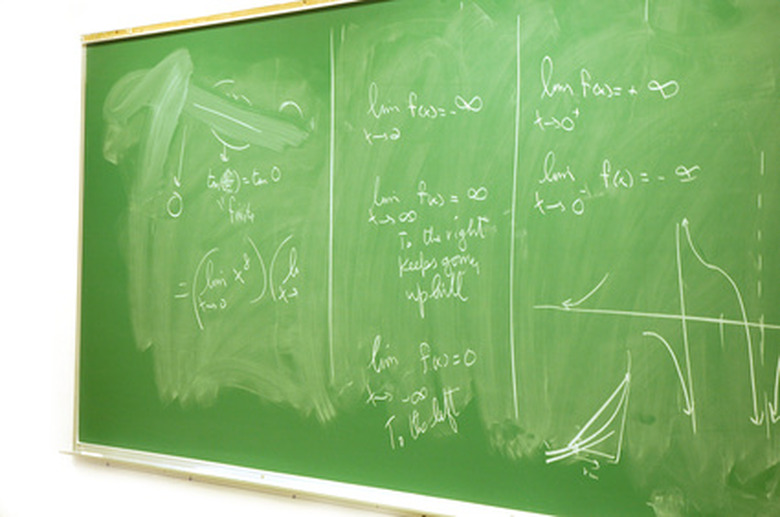The Bridge Method Of Factoring
A quadratic equation is a polynomial function typically increased to the second power. The equation is represented by terms composed of a variable and constants. A quadratic equation in its classic form is ax^2+bx+c=0, where x is a variable and the letters are coefficients. You can use a quadratic equation for graphing, using the variable and coefficients as plotting points. The most important points are termed "zeroes," or "roots," and can be found by using the bridge method of factoring.
Step 1
Remove any coefficients from the leading term. If the equation is 3x^2 – 2x + 3 = 0, then multiply all of the terms by 3 to remove the leading coefficient to obtain x^2 – 6x + 9 = 0.
Step 2
Determine what factors of the modified constant term will produce the sum of the second term. When -3 is multiplied by -3, the result is 9. -3 added to -3 will produce the sum of -6.
Step 3
Write the quadratic equation in factored form. x^2 – 6 + 9 = 0 becomes (x-3) (x-3) = 0.
Step 4
Divide the numerical constants in the factored form by the coefficient removed in the beginning. Move the coefficient to the beginning of the factored form. So (x-3) (x-3) = 0 should become 3(x-1/3) (x-1/3) = 0.
Step 5
Solve the equation for the zeroes. 3(x-1/3) (x-1/3) = 0 becomes (x-1/3) (x-1/3) = 0 and yields that both zeroes are equal to 1/3.
References
- "Beginning Algebra"; Jerome E. Kaufmann; 2010
Cite This Article
MLA
Gartneer, Chance E.. "The Bridge Method Of Factoring" sciencing.com, https://www.sciencing.com/bridge-method-factoring-7152425/. 24 April 2017.
APA
Gartneer, Chance E.. (2017, April 24). The Bridge Method Of Factoring. sciencing.com. Retrieved from https://www.sciencing.com/bridge-method-factoring-7152425/
Chicago
Gartneer, Chance E.. The Bridge Method Of Factoring last modified March 24, 2022. https://www.sciencing.com/bridge-method-factoring-7152425/
